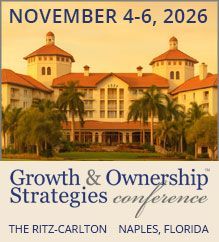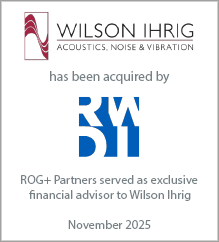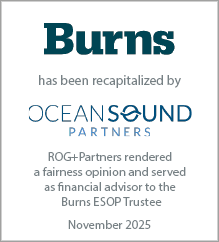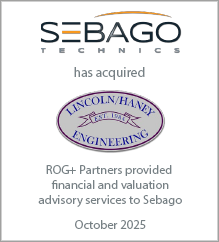Ian has spent the past twenty years working with hundreds of architecture, engineering and environmental consulting firms large and small throughout the U.S. and abroad with a focus on ownership planning, business valuation, ESOP advisory services, mergers & acquisitions, and strategic planning. Ian is a professionally trained and accredited business appraiser and holds the Accredited Senior Appraiser (ASA) designation with the American Society of Appraisers and is a certified merger & acquisition advisor (CM&AA) with the Alliance of Merger & Acquisition Advisors.
Gen X takes over the C-Suite, with a little help from the Millennials
September 3, 2024
This year, the youngest of the Baby Boomers will turn 60, and by the end of the decade, all members of this generation will exceed age 65 (the average retirement age in the U.S.). The A/E and environmental consulting sector has been in the midst of ownership transition between the Boomers and their younger counterparts for the last decade or more. However, the transition of C-suite leadership from the Boomers to Gen X and the Millennials is a more recent development and presents its own challenges.
Adapting to Technological Change
Members of Gen X and the Millennials differ from previous generations in many ways, including their experience of the impact of technological change in the workplace. Gen Xers’ careers have spanned a period of momentous technological transformation. As a Gen Xer myself, I remember the first office I worked in had a typing pool where hand-written memos were dropped off to be professionally typed. Mainframe computers were widely used instead of PCs, email was still novel, and cell phone technology was just emerging.
Gen X has experienced the adaptation to increasingly sophisticated software programs, the ubiquity of the internet, the digitalization of information of all types, the transformation (and some might argue the degradation) of communication, and most recently, the emergence of artificial intelligence, but it may still struggle to adapt compared to the younger Millennials and Gen Z, who grew up in the digital age.
This was the experience of Mark Rodriguez, who recently turned over the leadership of the firm he founded, Rodriguez Transportation Group, a 50-person transportation engineering firm headquartered in Austin, Texas. His successor, Chris Tomescu, and other members of the management team are mostly Gen X. “There are certainly differences between our generations,” says Rodriguez. “Gen X and the Millennials are more comfortable with technology, communicating and collaborating using video conferencing platforms, etc., and adapting to changing clients and a changing industry.”
Gen X and Millennials are also more comfortable with the remote or hybrid workplace that many firms have adopted since the pandemic. During his tenure, Rodriguez recalls walking around the office, talking with staff over his morning coffee, and the value of those in-person interactions. “I think members of my generation would have a difficult time accepting the remote/hybrid work environment as the new normal, which eliminates the day-to-day interaction needed for mentoring professional growth of younger staff,” admits Rodriguez.
Gil Hantzsch, CEO of MSA Professional Services, a 450-person multi-discipline firm based in Baraboo, Wisconsin, has similar observations but stresses that the qualities that make good leaders transcend generations. MSA’s senior leadership team is now primarily Gen X, but the individual selected to succeed Hantzsch as CEO, Nick Wagner, is actually a Millennial. “I see similar traits in all who are rising to the top, regardless of their generation,” says Hantzsch.
With respect to the rapidly evolving technological environment and its impact on the workplace, Hantzsch sees this as a challenge for Boomers and Gen X alike. “Regarding technology… there are big changes coming, and many of the Gen Xers and remaining Boomers will struggle to keep up. I recognize that it’s time for me to get out of the way to allow the next generations to navigate this shift in technology because it will be seismic.”
Supply and Demand for Equity
While Gen X brings unique professional experience and perspective to the C-suite, it’s also a smaller demographic than the previous and subsequent generations, as illustrated below. This has created challenges with respect to both the transition of leadership and the transfer of equity capital.
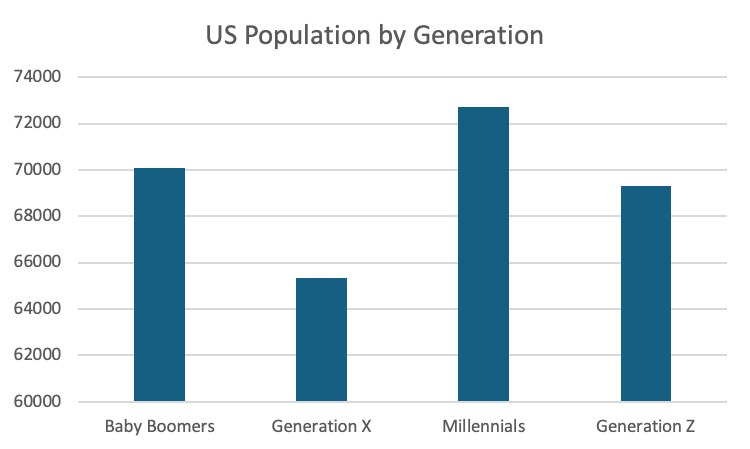
In terms of ownership transition, according to Engineering New Record, the total domestic (US) revenue from the top 500 design firms was $116.9 billion in 2023. If the publicly traded companies are excluded, the total 2023 revenue from privately held companies amounts to approximately $87 billion. Using typical internal (non-marketable, minority interest) valuation multiples, this would equate to anywhere from $28 billion to $44 billion in enterprise value—an enormous volume of capital to change hands between generations. And this doesn’t include the thousands of small practices that are not represented in the ENR 500.
The challenges associated with this generational transition of ownership have driven industry consolidation (mergers & acquisitions) and private equity investment for some time. Despite the higher interest rate environment and economic and political uncertainties, merger & acquisition activity in the industry is on pace for an all-time high in 2024. At the current pace through August, this year is likely to see over 500 deals closed.
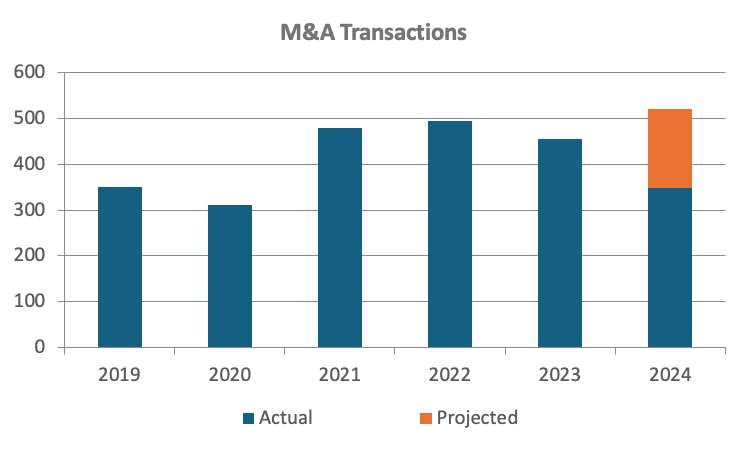
Private equity funding is driving much of the consolidation activity and helping balance the supply and demand equation in the market for equity capital in the A/E space. Among the 347 M&A transactions closed through August, approximately 12% involved private equity-backed buyers. Private equity investment has become increasingly common in recent years, particularly among the largest firms in the industry. At least 10% of the overall ENR 500 and nearly 20% of the ENR top 250 firms had direct private equity investment or were wholly or partially owned by private equity platform companies.
Outside of private equity, some firms have sought to address the supply and demand imbalance by adopting employee stock ownership plans (ESOPs). Such plans can serve as a tax-efficient vehicle for acquiring and holding shares for the benefit of employees. Rodriguez Transportation Group and MSA have both adopted this model.
“When I founded RTG, I had a vision of how to grow it and how to exit. We brought people into the ownership ranks earlier and subsequently formed an ESOP to help supplement demand for the shares,” recalls Rodriguez. Among his Baby Boomer colleagues at other firms, Rodriguez observes that some followed a similar path. Still, others didn’t have enough ownership candidates among the younger generations and, therefore, had to look to the external market.
Sustaining the Legacy of the Boomers
The Baby Boomer generation is often regarded as one of the most entrepreneurial. Whether this pertains to innate qualities they were born and raised with or the opportunities available during their careers is open to debate. As Mike Schwerin, the former CEO of California-based HELIX Environmental Planning, notes, “A lot of firms in the environmental industry were founded by Boomers because the laws underpinning this industry largely came into effect in the early 1970s.” Notably, the following decades marked one of the longest sustained periods of economic expansion in the U.S., providing a robust backdrop for new business formation and growth.
Fast forward to 2024, and we have as many as 200,000 firms employing 1.8 million professionals in the architecture, engineering, environmental consulting, and related industries in the U.S., according to the U.S. Census Bureau and economic research firm IBIS World. And the vast majority of these firms are privately held. The Boomers helped create many of these businesses, generating significant value. And while many owners will profess the desire to transition their firms internally, they also require financial security in retirement.
As we head into the latter half of the decade, the industry is trending toward a model in which a smaller demographic of industry professionals is assuming executive leadership roles while tapping into external investment and/or ESOPs to fund the retirement of the Boomers. Only time will tell whether this will prove to be a sustainable model for future generations.
Charting the future
So, with Gen X leaders at the helm, the A/E industry is entering an era of increased outside financial investment, continued consolidation, an evolving workplace environment, and transformational technology adoption. Are my fellow Gen Xers up to the task? I like to think so, at least with a little help from our Millennial colleagues.


